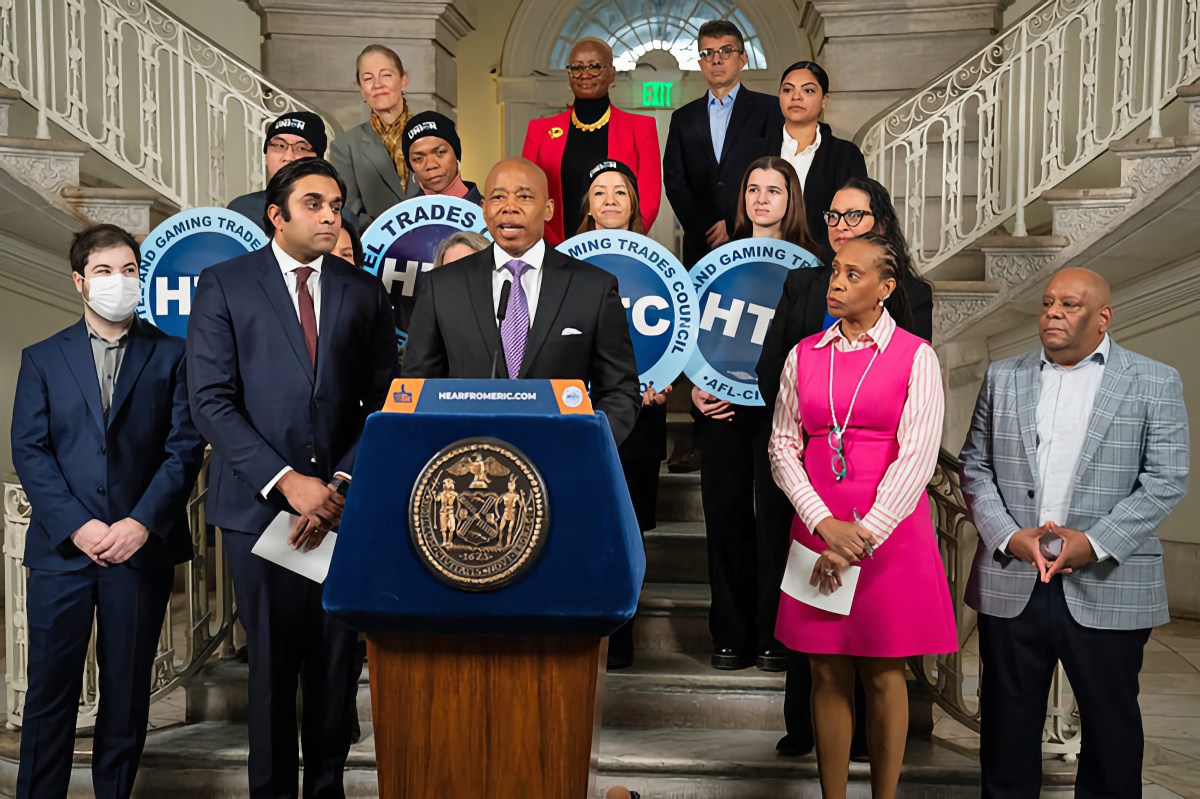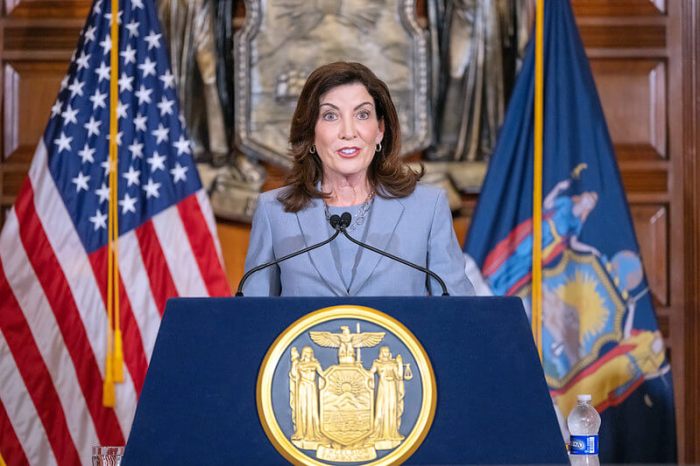Flanked by New York City Department of Health and Mental Hygiene (DOHMH) Commissioner Dr. Ashwin Vasan, Mayor Eric Adams on Monday announced a pioneering medical debt relief program that will invest $18 million over three years to relieve over $2 billion in medical debt for hundreds of thousands of working-class New Yorkers.
Adams told a press conference at City Hall that the one-time debt relief program, the largest municipal initiative of its kind in the country, will be launched in early 2024 and run for three years.
The mayor said the city will partner with RIP Medical Debt, a national, New York City-based nonprofit specializing in buying and ultimately wiping out medical debt, to acquire debt portfolios and retiree debt from health care providers and hospitals across New York City.
Adams said affected New Yorkers will then be notified that their medical debt has been relieved, stating that there is no application process for this program.
“Getting health care shouldn’t be a burden that weighs on New Yorkers and their families,” the mayor said. “Since day one, our administration has been driven by the clear mission of supporting working-class New Yorkers, and today’s investment that will provide $2 billion in medical debt relief is another major step in delivering on that vision.
“Up to half a million New Yorkers will see their medical debt wiped, thanks to this life changing program – the largest municipal initiative of its kind in the country,” he added. “No one chooses to go into medical debt – if you’re sick or injured, you need to seek care.
“But no New Yorker should have to choose between paying rent or for other essentials and paying off their medical debt, which is why we are proud to bring this relief to families across the five boroughs, as we continue to fight on behalf of working-class New Yorkers,” continued Adams, stating that medical debt – the number one cause of bankruptcy in the United States – disproportionately affects uninsured, under-insured, and low-income households.
He said the city’s program would wipe out debt for up to 500,000 New Yorkers on a one-time basis.
“Throughout my career as a doctor, I have seen first-hand how high health care costs and medical debt can force patients to make impossible choices,” said Dr. Vasan. “No one in New York City, or in America, in 2024, should have to choose between getting the health care they need and paying their rent or buying food to feed their families.
“But, as a provider, I have seen all-too-often patients who delay or forgo lifesaving care because of fear of high costs leading to debt,” he added. “Medical debt caused by the exorbitant and ever-rising costs of health care is the number one cause of personal bankruptcy in the United States, and also has our economy on an unsustainable path.
“As a physician and advocate, I know medical debt is killing New Yorkers and killing our economy, and, today, this city is stepping up to say that the people deserve better,” the health commissioner continued.
Allison Sesso, president and chief executive officer, RIP Medical Debt, said: “It’s gratifying to see this collaboration come together since RIP Medical Debt was founded here in New York City.
“Medical debt is a failing of the system writ large, not people,” Sesso added. “Beyond creating often unpayable financial burdens, medical debt undermines one’s mental health as well. By making future care more accessible, this initiative aligns well with hospitals and health systems’ community benefit and health equity efforts.”
Adams said RIP Medical Debt will purchase “bundled medical debt portfolios from providers like hospitals and commercial debt buyers to then abolish that debt at pennies on the dollar.”
He said debt relief recipients will then be notified that their debt has been bought by a third party and erased, “with no strings attached.”
“Recipients owe nothing on the debt and face no tax penalty,” said the mayor, stating that New Yorkers who fit one of the two eligibility criteria will qualify for the debt relief announced on Monday, if their debt has been acquired: Having annual household income at or below 400 percent of the Federal Poverty Line, having medical debt equal 5 percent or more of their annual household income.
To supplement the city’s investment, Adams said RIP Medical Debt and the Mayor’s Fund to Advance New York City will also partner to raise additional funding over three years.
He said New Yorkers interested in helping relieve medical debt can donate online.
The mayor said more than 100 million Americans hold some medical debt, with the total amount nationwide exceeding $195 billion.
“Carrying medical debt can undermine financial stability and mobility, as it can affect credit scores and put individuals and families in difficult positions to choose between care and other needed expenses,” he said.
Adams said Black and Latino communities are 50 percent and 35 percent, respectively, more likely to hold medical debt than their white counterparts.
“And while medical debt may be held by those without insurance, even those with insurance are at risk of carrying medical debt,” he said.



























